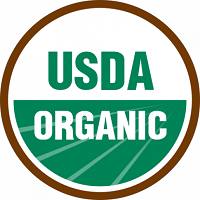Organic food is known to be free of pesticides, preservatives and genetic enhancements. The
food is not only guaranteed to be free of these items, they are regulated and tested by government agencies and individual accrediting organizations to ensure that they are. ‘USDA Organic’ certification is a way that consumers can distinguish true organic foods from those that are questionable without doing extensive research into where their food comes from. This certification comes with a large responsibility for suppliers and manufacturers, as there are several things that a company must do in order to stamp the logo on their product, but in a world where consumers are increasingly informed and interested in how their food comes to them, getting certified is an outright necessity for many companies.
The Requirements
The U.S. Department of Agriculture (USDA) is the agency that certifies whether or not a food is considered organic. According to the agency, the food can be classified as “‘100 percent
organic,’ ‘organic’ or ‘made with organic ingredients,’ with each classification stringently certified by the USDA. No matter what the chosen classification, the producer, manufacturer or handler of organics needs to apply for certification through the USDA. The process is involved, as the agency must ensure that your process will adhere to its standards to the letter.
Identify Your Operation
The USDA must know what type of business you run in order to understand what the ways in
which organics are used in your company.
Provide a Substance History
Your history in using chemicals on foods as well as in and around the plant is necessary in
determining eligibility for organics certification. Some substances remain in the soil and on
surfaces long after its use. You may have to wait until the substance has dissipated in order to
qualify for certification. Other substances can be removed after a few processes. Knowing the
chemical history of your facilities will allow the USDA to determine if there are chemicals around that could find their way into the food, even if you haven’t used them recently, or if they were present in the facility before you began working there.
Identify Organic Ingredients in Your Products
Products which are certified as organic must be kept contaminant and chemical-free during and throughout the production process, so the chemicals and ingredients used in other foods may have to be carefully monitored and isolated to prevent contamination.
Describe Your “Organic System Plan”
The plan describes the ways in which you plan to make and keep your process organic. This includes the manner in which you plan to keep records for the next five years on the organics process as required by the USDA. You must detail not only your plan for preventing
organic and non-organic foods from commingling according to the USDA, you must also lay out
a contingency plan, in the event of the contamination occurring.
Consumers buying organic can rest assured that the companies producing and handling the
foods are thoroughly vetted by the USDA. The agency places the companies through a rigorous
certification process to ensure that the foods produced adhere to the organic labels they carry.


